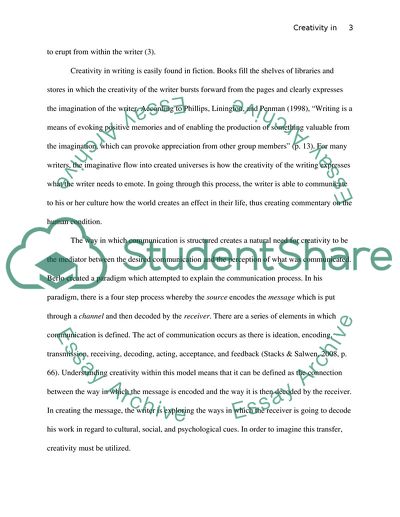Cite this document
(Language and Creativity the Art of Everyday Talk Assignment, n.d.)
Language and Creativity the Art of Everyday Talk Assignment. Retrieved from https://studentshare.org/english/1747621-creativity-can-be-found-in-any-text-discuss-using-examples-of-texts-that-might-not-be-traditionally-considered-creative-and-illustrating-your-explanations-with-ideas-and-theories-from-part-1-of-the-module
Language and Creativity the Art of Everyday Talk Assignment. Retrieved from https://studentshare.org/english/1747621-creativity-can-be-found-in-any-text-discuss-using-examples-of-texts-that-might-not-be-traditionally-considered-creative-and-illustrating-your-explanations-with-ideas-and-theories-from-part-1-of-the-module
(Language and Creativity the Art of Everyday Talk Assignment)
Language and Creativity the Art of Everyday Talk Assignment. https://studentshare.org/english/1747621-creativity-can-be-found-in-any-text-discuss-using-examples-of-texts-that-might-not-be-traditionally-considered-creative-and-illustrating-your-explanations-with-ideas-and-theories-from-part-1-of-the-module.
Language and Creativity the Art of Everyday Talk Assignment. https://studentshare.org/english/1747621-creativity-can-be-found-in-any-text-discuss-using-examples-of-texts-that-might-not-be-traditionally-considered-creative-and-illustrating-your-explanations-with-ideas-and-theories-from-part-1-of-the-module.
“Language and Creativity the Art of Everyday Talk Assignment”, n.d. https://studentshare.org/english/1747621-creativity-can-be-found-in-any-text-discuss-using-examples-of-texts-that-might-not-be-traditionally-considered-creative-and-illustrating-your-explanations-with-ideas-and-theories-from-part-1-of-the-module.


